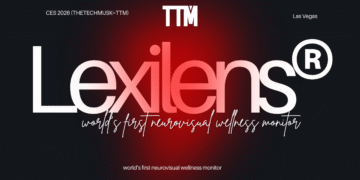In the evolving landscape of digital design, the tools and techniques we use have a profound impact on the final product’s quality and versatility. One of the most significant developments in this arena has been the rise of vector graphics. Unlike raster graphics, which are made up of pixels, vector graphics are composed of paths defined by mathematical equations. This fundamental difference gives vector graphics a unique set of advantages, making them indispensable in modern design.
1. Superior Scalability
One of the most compelling reasons to use vector graphics is their scalability. Since vector graphics are based on mathematical equations, they can be scaled to any size without losing quality. Whether you need a tiny icon for a mobile app or a massive billboard graphic, vector images retain their crispness and clarity. This is particularly crucial in today’s multi-device world, where designs need to look perfect on a variety of screen sizes and resolutions.
2. Smaller File Sizes
Vector graphics typically have smaller file sizes compared to raster images. This is because they store data as mathematical instructions rather than a grid of individual pixels. Smaller file sizes mean faster load times for web pages and reduced storage requirements, both of which are essential for optimizing website performance and enhancing user experience. For businesses, this translates to lower bandwidth costs and a more efficient digital presence.
3. Versatility in Editing
When it comes to making changes, vector graphics offer unmatched flexibility. Each element of a vector image is separate and can be manipulated independently. This is particularly useful in iterative design processes, where modifications are frequent. Designers can easily change colors, shapes, and other properties without affecting the overall image quality. Tools like Adobe Illustrator and CorelDRAW are industry standards for vector graphic creation and editing, providing robust features for professional use.
4. Precision and Detail
Vector graphics excel in creating detailed and precise designs. This is because vectors are not limited by resolution; they can represent shapes and lines with exact precision. This makes them ideal for technical illustrations, logos, and any design that requires sharp, clean lines. Logos, for instance, must maintain their integrity across various applications and sizes, from business cards to large-scale advertising materials. Vector graphics ensure that logos and other critical branding elements look sharp and professional, regardless of their size.
5. Easy to Update and Customize
Businesses often need to update their marketing materials, which can be time-consuming if you’re working with raster images. Vector graphics simplify this process. Need to tweak a logo, change the color scheme of an illustration, or adjust the dimensions of a graphic? With vector files, these tasks are straightforward and don’t compromise image quality. This ease of customization ensures that businesses can keep their branding and design elements fresh and relevant without significant effort.
6. Essential for Professional Image Editing Services
For companies offering image editing services, the importance of vector graphics cannot be overstated. These services often include converting raster images to vector formats, enhancing the scalability and usability of the images for clients. By leveraging vector graphics, image editing services can provide high-quality, versatile graphics that meet a wide range of client needs. From creating scalable logos to designing intricate illustrations, vector graphics are a cornerstone of professional image editing and graphic design services.
7. Broad Applicability Across Industries
Vector graphics are not just for graphic designers; they are widely used across various industries. In fashion, for instance, vectors are used to create patterns and prints that can be scaled to fit different fabric sizes. In engineering and architecture, vector graphics are essential for creating detailed technical drawings and blueprints. In education, vectors are used to create clear, scalable diagrams and illustrations that can be easily modified and reused.
8. Enhanced Print Quality
For print media, vector graphics are a game-changer. Because they can be scaled without loss of quality, vectors ensure that printed materials like brochures, posters, and business cards look sharp and professional. This is particularly important for maintaining brand consistency across different mediums. Printers also benefit from vector files because they can be easily adjusted for different printing specifications, ensuring high-quality results every time.
9. Future-Proof Your Designs
As technology evolves, the ways we use and display graphics are also changing. Vector graphics offer a future-proof solution because they are not tied to any specific resolution or device. As new display technologies emerge, vector graphics will continue to provide clear and sharp images, making them a smart long-term investment for any business or designer.
10. Conclusion: Embrace the Power of Vector Graphics
In conclusion, vector graphics are an essential tool in modern design, offering numerous advantages over raster graphics. Their scalability, precision, versatility, and small file sizes make them ideal for a wide range of applications, from web design to print media. For image editing services, vector graphics are particularly valuable, enabling the creation of high-quality, customizable graphics that meet diverse client needs.
As the digital landscape continues to evolve, embracing vector graphics will ensure that your designs remain relevant, high-quality, and professional. Whether you’re a business looking to enhance your branding or a designer aiming to create versatile and impactful graphics, vector graphics are a critical component of modern design strategy. Image 2 Vector Graphics India

























